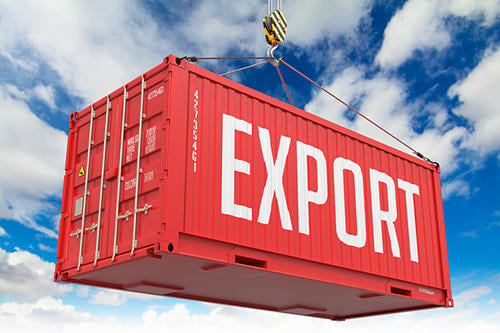Filipino exporters, particularly of agricultural products, manufacturing goods and services, are advised to sell more to other large markets with high product demand in a bid to unlock the Philippines’ unrealized export potential of $49 billion.
Rami Hourani, national project coordinator at the International Trade Centre (ITC), said East Asia remains to be the largest market but North America, European Union (EU) and the Association of Southeast Asian Nations (ASEAN) also hold important growth potential.
“The Philippines as a whole should really focus on value-addition and technological advancement,” he said during the second quarter general membership meeting of the Philippine Exporters Confederation Inc. (PHILEXPORT) on April 16.
In the agriculture sector, Hourani identified single products and simple value chains that can support diversification and increase exports in the short to medium run, including bananas, pineapple and tuna.
He said there are also complex value chains with high export potential such as coconut products, cocoa and related products, and processed foods.
Hourani said coffee is not currently among the Philippines’ products with export potential but is among the top products with diversification potential.
“That is to say that if we began to export coffee, there might be essentially a blue ocean of opportunities to capitalize on by the enterprising exporter. Currently, we are a net importer of coffee, mostly unroasted. If coffee beans become more competitive, the country can essentially cover the entire value chain,” he said.
Hourani said other interesting product categories with opportunities are bamboo and rattan, and spices particularly crushed or ground pepper.
“Large shares of these export potentials are still completely unrealized and that is to say exporter for these commodities, you will likely be the first to do so,” he added.
In the manufacturing sector, Hourani said sectors that are technologically advanced and exhibit important growth opportunities include motor vehicles and parts; plastics and rubber; optical products, watches and medical instruments; and machinery and electricity.
To balance the dominance of electronics, he underscored the need to employ two complementary approaches –increase exports in specific export products (existing and new) with promising growth potential, and raise the number of products exported.
Hourani said new potential export products facing high market demand include motor vehicles for the transport of persons, as well as reception apparatus for television, palm oil excluding crude and fractions, coffee and rubber gloves.
In services, Hourani said top sectors with export potential for the Philippines are other business services, travel, information technology, computer and telecommunications technology.
Meanwhile, Hourani said exporting to the EU requires knowledge of applicable tariff rates, the compliance with rules of origin, registration with the EU Registered Exporter (REX) system, and knowledge of market access and regulatory requirements.
He said domestic requirements for exporting to the EU include business registration, registration with the Bureau of Customs, and obtaining necessary permits and clearances.
Hourani said the ARISE Plus Philippines project has developed business guides on exporting to the EU market
“These EU business guides were developed in close coordination with DTI (Department of Trade and Industry), as well as exporters, to respond to the challenges of the exporters, understand and comply with key technical and regulatory requirements to export to the EU markets and address other challenges faced by MSMEs (micro, small and medium enterprises), as well as new exporters,” he added.
Hourani said additional resources for exporting to the EU include the EU’s Access2Markets portal, the EU’s GSP (Generalized Scheme of Preferences) Hub, ITC Standards Map, ITC Rules of Origin Facilitator and the Philippine National Trade Repository, Tradenet and Tradeline.







